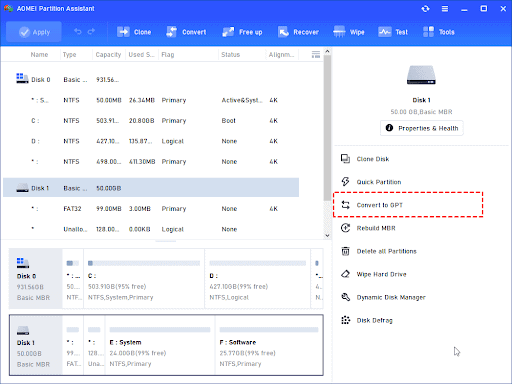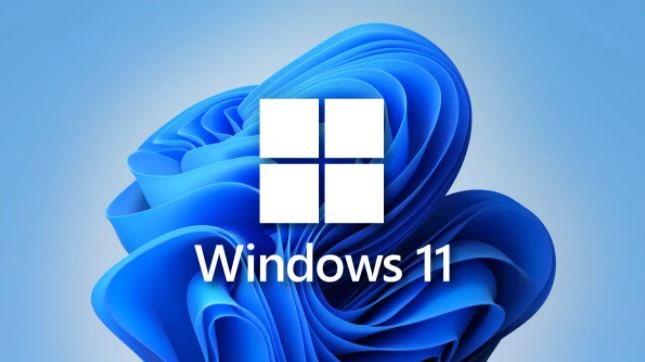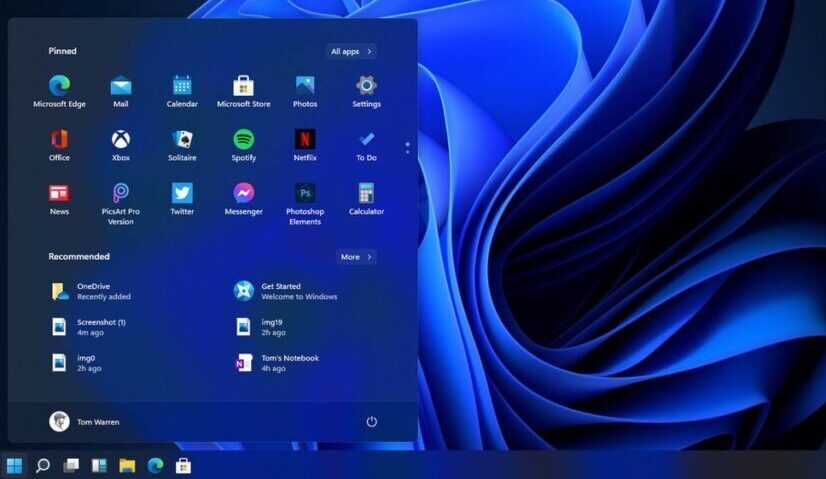A multi-monitor arrangement can significantly boost your productivity when multitasking with different apps, as adding one or two extra displays allows you to create a larger canvas on which to disperse the effort. These configurations, however, are only useful if you know how to use them correctly.
You have several options and features in Windows 11 to handle two, three, four, or more monitors without relying on third-party applications or professional assistance.
In this guide, we will walk you through the different ways to set up a multi-monitor on Windows 11

How to prepare for multi-monitor setup on Windows 11
Before digging into these steps, connect the displays correctly, including the power and signal cables (HDMI or DisplayPort), and turn on all the monitors. However, you need to make sure that Windows 11 is seeing all the monitors:
- Open Settings.
- Click on System.
- Click the Display page on the right side.
- Confirm all the monitors are on the settings page.
- Click the Multiple displays settings.
- (Optional) Click the Detect button to force the system to detect any missing displays.
In case any of the displays are still missing, recheck the connections, restart the computer, and use the above steps again.
Check for video and system updates
In addition, you also want to check for updates to make sure that the device has the latest system updates and drivers installed for the best experience.
Here are steps you must follow to check updates on Windows 11:
- Open Settings.
- Click on Windows Update.
- Click the Check for updates button.
- Click the Advanced options setting.
- Under the “Additional options” section, click the Optional updates setting.
- Check the video driver update (if applicable).
- Click the Download and install button.
You can also read: How to Uninstall Windows 11
How to rearrange displays on Windows 11
Because it’s simple to connect the monitors on the graphics card in the wrong sequence when trying to build a dual-monitor or triple-monitor arrangement, Windows 11 has a setting to re-arrange them correctly.
Follow the steps below to rearrange multiple displays on Windows 11:
- Open Settings.
- Click on System.
- Click the Display page on the right side.
- (Optional) Click the Identify button to determine which monitor you are rearranging.
- Drag and drop to rearrange each display according to their physical layout on the desktop. A quick tip: Confirm all monitors align at the top perfectly. Otherwise, you may have problems moving the mouse between displays from the corners.
- Click the Apply button.
Once the steps are completed, the new layout configuration will apply, allowing you to work across each display and run the app without issues.
How to choose primary display on Windows 11
In Windows 11, you may specify which monitor should be the default to instruct the system as to where apps should start by default and where the system tray and clock should be displayed.
Follow the steps below to change which monitor is the primary:
- Open Settings.
- Click on System.
- Click the Display page on the right side.
- Select the non-primary display.
- Click the Multiple displays setting.
- Check the Make this my main display option.
Once the steps are completed, you may see a visual effect on the screen to apply the changes, and then you will notice that the system tray and clock will be available from the main display.
How to select viewing mode for multiple displays on Windows 11
It is also possible to modify the display’s viewing mode. You can, for example, expand the primary desktop across the new display or mirror both displays to show the same content on both panels, which might be useful during a presentation. You can also turn off the laptop display and utilize the external monitor as the only screen.
Choose view mode in Settings
Follow the steps below to change the Windows 11 viewing mode:
- Open Settings.
- Click on System.
- Click the Display page on the right side.
- Select the monitor you want to customize.
- Use the drop-down menu on the bottom-right and select the viewing mode:
- Duplicate — This shows the same desktop across displays.
- Extend — Expands the desktops of the first display across all displays.
After the steps are completed, the new configuration will apply. The settings would be different depending on the number of monitors connected to the computer.
You can also read: How to Download a Windows 10 ISO File Legally
Choose view mode in Project Flyout
Windows 11 also allows you to switch display modes on the fly using the Project feature, which you can access using the Windows key + P keyboard shortcut.
Once you invoke the shortcut, a Project flyout will open from the right side with four options:
- PC screen only — Only the primary display is used.
- Duplicate — Secondary displays will mirror the primary monitor.
- Extend — Both screens are combined to offer an extended desktop.
- Second screen only — Only the secondary displays are used.
Typically, you should pick the Extend option since it allows you to use the primary monitor normally and the secondary monitor at their original resolution, resulting in a single huge canvas.
When using a second monitor or projector to show a presentation, the Duplicate option is also useful. In contrast, the Second screen-only option is ideal when you wish to close the lid of a laptop and only operate with an external monitor.
How to change scale and layout settings on Windows 11
Although Windows 11 apply the optimal display settings, sometimes, you may still need to change each monitor’s scaling, resolution, and orientation.
Choose predefined scale settings
The scale settings can come in handy when using monitors of different sizes and screen resolutions to text, icons, frames, and other items of the same size across displays. If you have a high-resolution monitor, you can use the scale setting to make things bigger and more readable.
To change the best scale settings for you, use these steps:
- Open Settings.
- Click on System.
- Click the Display page on the right side.
- Select the monitor you want to customize.
- Under the “Scale & layout” section, use the Scale setting and choose the appropriate scale option.
Once the steps are completed, you may need to repeat the instructions for the other monitors. Although you don’t need to sign out and back in to apply the changes, you may still need to restart some applications to see the scale setting changes.
Choose custom scale settings
Use the steps below for custom scale settings on Windows 11:
- Open Settings.
- Click on System.
- Click the Display page on the right side.
- Select the monitor you want to customize.
- Under the “Scale & layout” section, click the Scale setting.
- Use the Custom scaling setting to use a different scaling size between 100% and 500%.
- Click the Apply (check) button.
Once you complete the steps, you will need to sign out of the account and sign back in to see the new changes. If the scaling doesn’t look right, return to the settings and tweak the scaling setting until you land on an acceptable configuration.
If you want to use the predefined scale settings again, turn off custom scaling and sign out. Otherwise, the option will be grayed out.
You can also read: How to Change Default Language on Windows 11
Choose display resolution
Although Windows 11 can configure the most optimal screen resolution, you may still need to change the resolution manually.
To change the screen resolution on Windows 11, use these steps:
- Open Settings.
- Click on System.
- Click the Display page on the right side.
- Select the monitor you want to customize.
- Under the “Scale & layout” section, use the Display resolution settings to choose the correct screen resolution.
After completing the steps, you may need to repeat the instructions to change the resolution to the remaining monitors.
If you want to make text and other items bigger, you should be using the scale settings instead.
Choose display orientation
Depending on your requirements, you may need to use one or all the monitors vertically instead of the traditional horizontal orientation. If this is the case, you can use the “Display orientation” settings.
Follow the steps below to change the display orientation on Windows 11:
- Open Settings.
- Click on System.
- Click the Display page on the right side.
- Select the monitor you want to customize.
- Under the “Scale & layout” section, use the Display orientation settings to flip the screen in:
- Landscape.
- Portrait.
- Landscape (flipped).
- Portrait (flipped).
After you complete the steps, the screen will flip to the orientation you selected.
How to manage advanced display settings on Windows 11
It’s usually not recommended to change the advanced display settings. However, since every display looks different, you may need to tweak some of the settings to deal with screen flickering or improve the color accuracy.
Configure the custom color profile
If one of the displays is not displaying colors accurately, it’s possible to use a custom color profile.
You should only use those created by a trusted source or device manufacturer when changing the color profile settings. If you’re not sure, you can refer to this guide to download the correct color profile for your monitors.
Follow the steps below to configure a custom color profile on Windows 11:
- Open Settings.
- Click on System.
- Click the Display page on the right side.
- Under the “Related settings” section, click the Advanced display setting.
- Select the monitor that you want to configure using the “Select a display to view or change its settings” option.
- Under the “Display information” section, click the Display adapter properties option.
- Click the Color Management tab.
- Click the Color Management button.
- Click the Devices tab.
- Select a display from the list.
- Check the Use my settings for this device option.
- Click the Add button.
- Click the Browse button and locate the new color profile.
- Double-click the .icm file to install the new profile.
- Click the Close button.
Once you complete the steps, repeat the instructions to set a different color profile for the other monitors.
You can also read: How To Install Windows 11 on Mac with BootCamp
Change refresh rate
Most users will be satisfied with the default refresh rate (frames per second) of 59Hz or 60Hz. However, if your monitors allow a faster refresh rate or you observe screen flickering, adjusting the settings can provide a better and smoother viewing experience.
To set a different refresh rate on Windows 11, use these steps:
- Open Settings.
- Click on System.
- Click the Display page on the right side.
- Under the “Related settings” section, click the Advanced display setting.
- Select the monitor that you want to configure using the “Select a display to view or change its settings” option.
- Change the refresh rate with the “Choose a refresh rate” setting.
Once the steps are completed, you may need to repeat the steps to adjust the refresh rate on the remaining display.
Enable variable refresh rate
Variable refresh rate (VRR) is a technology available on supported monitors that dynamically increases and decreases the refresh rate according to the content to save battery life.
Follow the steps below to enable VRR on Windows 11:
- Open Settings.
- Click on System.
- Click the Display page on the right side.
- Under the “Related settings” section, click the Advanced display setting.
- Select the monitor that you want to configure using the “Select a display to view or change its settings” option.
- Choose the Dynamic option in the “Choose a refresh rate” setting.
Once you complete the steps, Windows 11 will dynamically adjust the refresh rate to balance the screen performance and battery life.
Enable multiple display features
Windows 11 includes a few new features to improve the multiple-monitor experience. For example, when you disconnect the external display, all the apps on the secondary display will minimize automatically. Then when you reconnect the display, the apps will restore automatically to their original location.
To enable these features, use these steps:
- Open Settings.
- Click on System.
- Click the Display page on the right side.
- Click the Multiple displays setting.
- Check the Remember window locations based on monitor connection option.
- Check the Minimize windows when a monitor is disconnected option.
When utilizing these settings and removing the external display, all apps will be minimised in the Taskbar. When you reconnect the display, all of the apps will instantly restore to their proper placements.
How to show Taskbar across multiple monitors on Windows 11
Follow the steps below to show the Taskbar across displays:
- Open Settings.
- Click on Personalization.
- Click the Taskbar page on the right side.
- Click the Taskbar behaviors setting.
- Check the Show my taskbar on all displays option.
- (Optional) Use the When using multiple displays, show my taskbar apps setting and choose how apps will appear in the Taskbar:
- All taskbars.
- Main taskbar and taskbar when the window is open.
- Taskbar where the window is open.
After you complete the steps, the Taskbar will appear across all monitors.
You can also read: How to use Snap Assist on Windows 11 Device
How to change the background on multiple displays on Windows 11
By using the slideshow option or manually selecting a different wallpaper on each monitor, Windows 11 also allows you to create a distinct background image on each device to make the experience more personalized.
Show different wallpapers with slideshow
Follow the steps below to change the wallpaper of each monitor with the slideshow option:
- Open Settings.
- Click on Personalization.
- Click the Background page on the right side.
- Select the Slideshow option from the “Personalize your background” setting.
- Click the Browse button.
- Select a folder with a collection of images to rotate on all the monitors.
- Click the Choose this folder button.
- Select the rotation frequency using the “Change picture every” drop-down menu.
- Turn on the Shuffle toggle switch.
- (Optional) If you’re using different-sized images, use the Choose a Fit drop-down menu and select the Fill option.
Once the steps are completed, Windows 11 will randomly assign a wallpaper, depending on the rotation frequency you selected.
Show different wallpapers manually
Follow the steps below to set a different background for each display manually:
- Open Settings.
- Click on Personalization.
- Click the Background page on the right side.
- Select the Picture option from the “Personalize your background” setting.
- Click the Browse button.
- Select the wallpaper and click the Choose picture option.
- Right-click the image and select the monitor to display the wallpaper.
Once the steps are completed, repeat the instructions to assign a different background for the remaining monitors.
Would you like to read more about Windows 11-related articles? If so, we invite you to take a look at our other tech topics before you leave!
![]()












